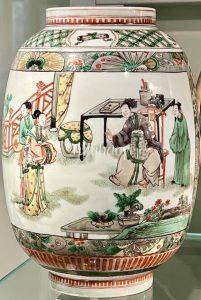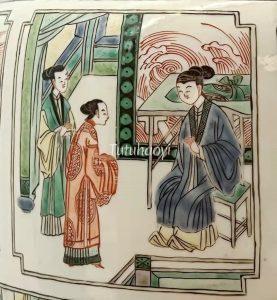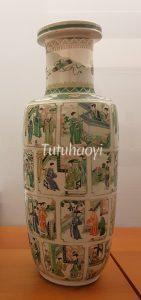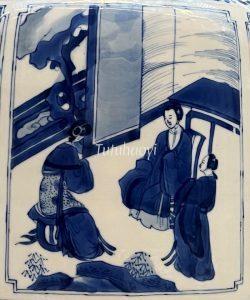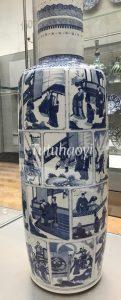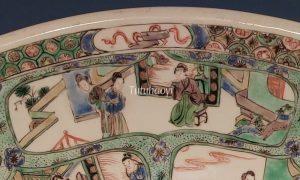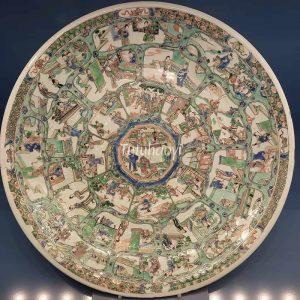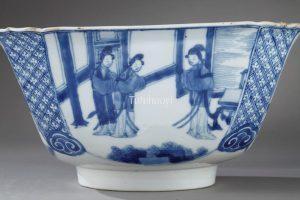Funeral Halt at the Secluded Monastery
萧寺停丧
© Tutuhaoyi.com owns the copyright of the description content for the images attached. Quoting all or part of the description content on this page is permitted ONLY IF ‘Tutuhaoyi.com’ is clearly acknowledged anywhere your quote is produced unless stated otherwise. (本页描述内容版权归Tutuhaoyi.com所有,转发或引用需注明 “Tutuhaoyi.com”, 侵权必究, 已注开源信息的条目除外。)
This scene opens the first act of Romance of the Western Chamber and establishes the historical setting while introducing the principal characters.
The female lead is Miss Cui Yingying 崔莺莺, a 19-year-old young lady from the esteemed Cui family. She is accompanied by her mother, Lady Zheng 郑氏 (also referred to as Madame Cui 崔夫人), the family’s adopted son Huanlang 欢郎, and her clever maid, Hongniang 红娘. Madame Cui had long arranged Yingying’s betrothal to her own nephew, Zheng Heng 郑恒, and has recently sent him a letter urging him to come and assist with the family’s affairs.
The story is set in the year AD 801. Following the death of Madame Cui’s husband—the former Prime Minister of the Tang dynasty—the family is escorting his coffin back to their ancestral home. However, their journey is obstructed, and they take temporary lodging in the western wing of the Monastery of Universal Salvation (Pu Jiu Si 普救寺). The play’s title, Romance of the Western Chamber (Xixiang Ji 西厢记), is derived from this setting.
Meanwhile, the male lead of the play, the young scholar Zhang Gong 张珙(courtesy name Junrui 君瑞), is travelling to the capital to sit the imperial civil service examinations. See more images and scene description here.
story scene description by Rachel Ma
Other figural stories on Chinese artworks:
Zhang Chang Painting His Wife’s Eyebrows 张敞画眉
Xiao Shi’s Playing the Xiao Flute Attracting Phoenixes 萧史吹箫引凤
Fig 1: famille verte porcelain ovoid jar, Kangxi period (1662–1722), Qing dynasty, courtesy of The Burrell Collection, Glasgow, the UK; Photograph by Mr Robert Bradlow
Fig 2-3: rouleau vase with overglaze enamelled decoration, Kangxi period (1662–1722), Qing dynasty, courtesy of The Guimet Museum, Paris; Photograph by Mr JP Kim
Fig 4-5: rouleau vase with underglaze blue decoration, Kangxi period (1662–1722), Qing dynasty, courtesy of the Victoria & Albert Museum, London; Photograph by Mr JP Kim
Fig 6-7: famille verte porcelain charger, Kangxi period (1662–1722), Qing dynasty, courtesy of Munich Residence Museum; Photograph by Mr Jason Ooi
Fig 8: porcelain bowl with underglaze blue decoration, Kangxi period (1662–1722), Qing dynasty, courtesy of Bertrand de Lavergne Gallery, Paris
